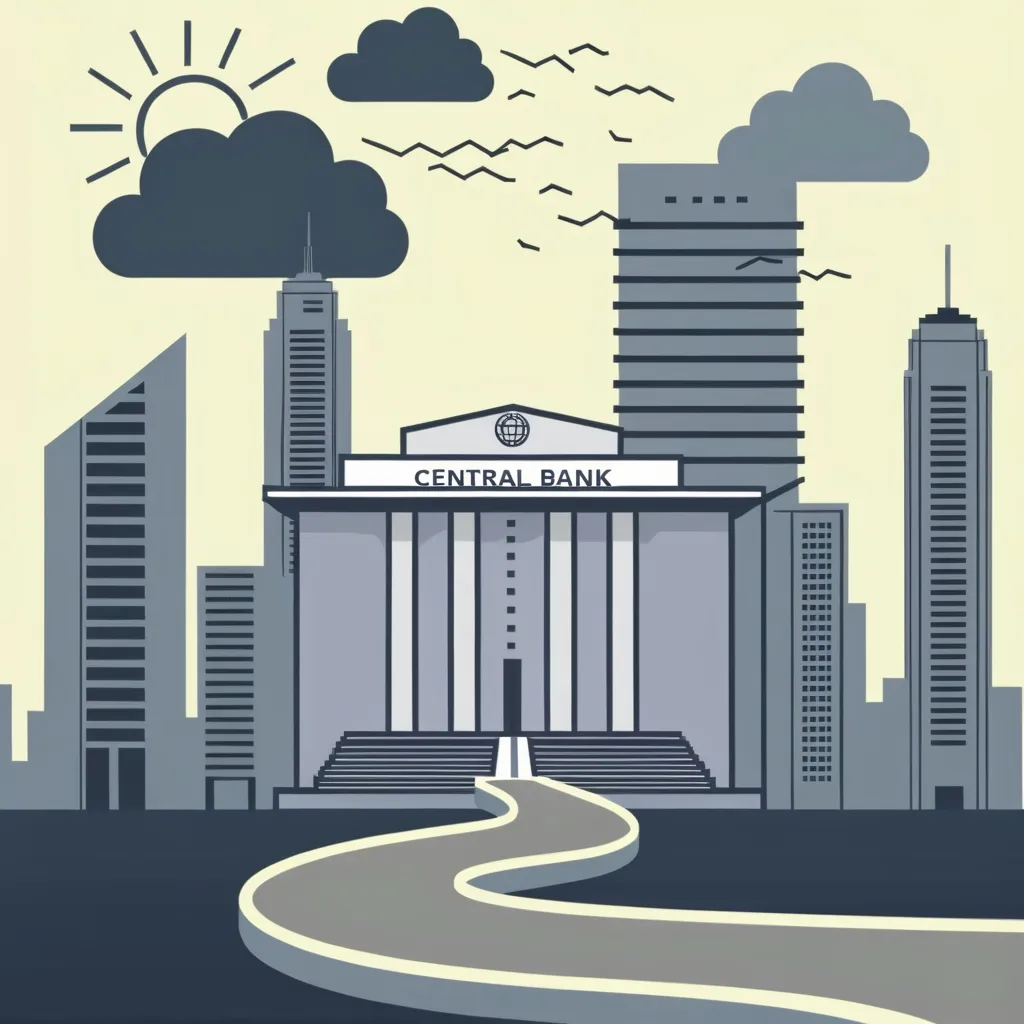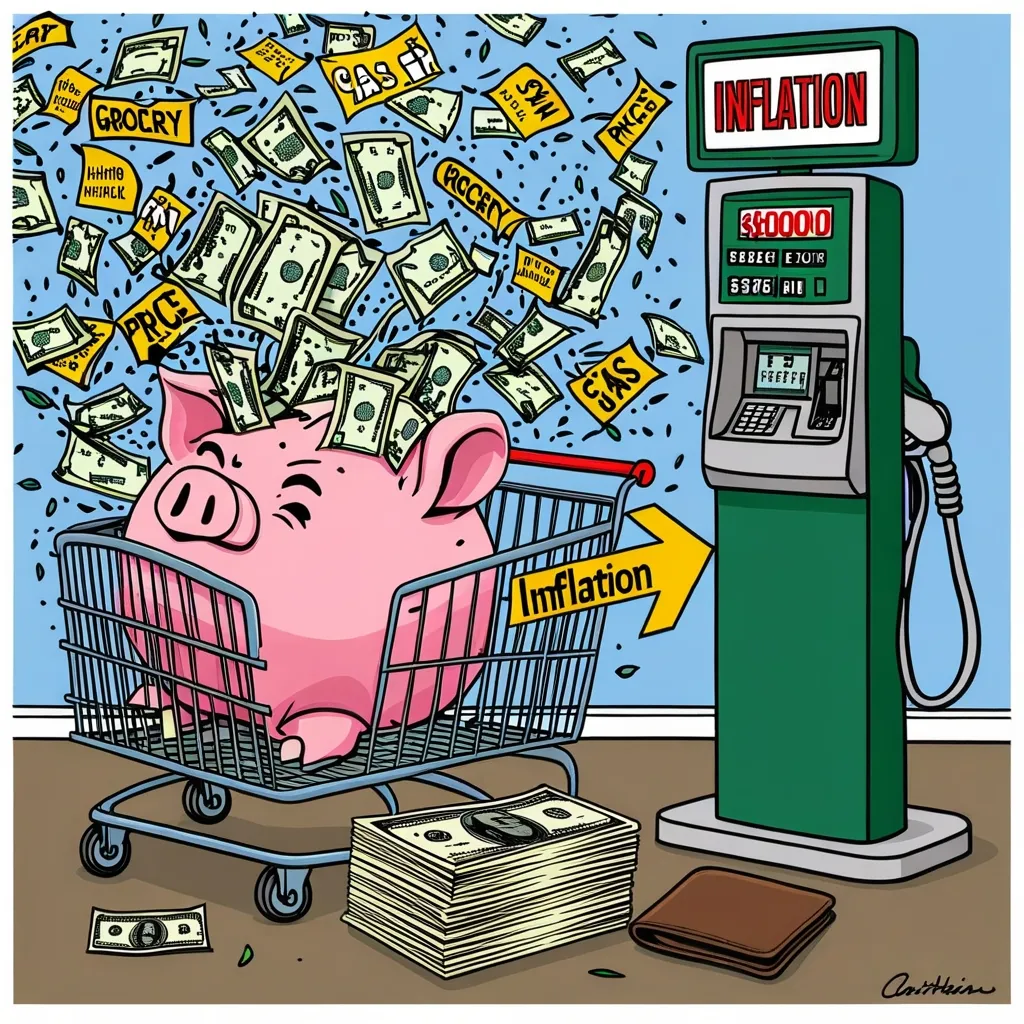Central banks are at a crossroads, facing tough choices about how to handle inflation in a world that’s changed dramatically. The old playbook just doesn’t cut it anymore, and they’re scrambling to figure out what works in this new economic landscape.
For years, the magic number was 2%. That’s what central banks around the globe aimed for when it came to inflation. It seemed like the sweet spot - not too high to cause problems, not too low to risk deflation. But boy, have things changed.
The COVID-19 pandemic threw a massive wrench in the works. Suddenly, inflation shot up like a rocket, catching everyone off guard. It wasn’t just the pandemic, though. Geopolitical tensions and big shifts in how our economies work all played a part. Now, central banks are scratching their heads, wondering if that 2% target still makes sense.
Think about it - after the 2008 financial crisis, everyone was worried about deflation. Inflation seemed like a distant memory. Fast forward to today, and it’s a whole different ball game. The tools central banks used to keep things stable just aren’t cutting it anymore.
One of the big headaches for central banks is trying to balance keeping inflation in check with making sure the financial markets don’t go haywire. It’s like trying to walk a tightrope while juggling flaming torches. Raise interest rates to fight inflation, and you might send the markets into a tailspin. It’s a delicate dance, and central banks are still figuring out the steps.
Take the European Central Bank, for example. They’ve had to tweak their approach to deal with surging inflation while also keeping an eye on the markets. It’s not an easy task, and there’s no one-size-fits-all solution.
The whole idea of inflation targeting is getting a makeover too. It used to be simple - aim for 2% and adjust interest rates to hit that target. But now, some central banks are thinking about being more flexible. Instead of focusing on the current inflation rate, they’re looking at where inflation might be heading in the medium term. It’s like switching from a GPS that only shows you where you are now to one that predicts traffic ahead.
There’s even talk of changing the target itself. Some folks are arguing that 2% is too rigid and doesn’t reflect the world we live in now. The Federal Reserve in the U.S. is already moving towards a more flexible approach, aiming for an average of 2% over the long run instead of hitting it on the nose every time.
Some economists are pushing for a higher target, maybe 2.5% or 3%. They say it makes more sense given the current pressures on food, energy, and housing costs. Plus, a slightly higher target could encourage more investment and economic growth. But not everyone’s on board with this idea. Critics worry it could lead to inflation getting out of control.
One thing central banks can’t afford to lose is their credibility. They’ve spent years building trust around their inflation targets. If they start changing things willy-nilly, it could shake people’s confidence. Imagine if your favorite restaurant suddenly changed their signature dish - you might start to wonder if they know what they’re doing.
Communication is key in all of this. Central banks need to be crystal clear about what they’re doing and why. It’s not enough to just make decisions behind closed doors anymore. They need to explain their thinking in a way that makes sense to everyone, from Wall Street bigwigs to everyday folks trying to make ends meet.
And it’s not just about inflation anymore. Central banks are having to juggle multiple balls at once. Take the Federal Reserve again - they’re not just focused on keeping prices stable, but also on making sure as many people as possible have jobs. It’s like being a parent trying to keep all your kids happy at once - not an easy task.
So, what does all this mean for you and me? Well, these changes in how central banks operate can affect pretty much every aspect of our financial lives. The interest rate on your mortgage, the cost of your weekly grocery shop, even how much your savings grow - it’s all connected to these big decisions being made by central banks.
If you’re thinking about buying a house, for example, keeping an eye on how central banks are approaching inflation could help you decide when to make your move. Or if you’re investing in the stock market, understanding these shifts could inform your strategy.
Even if you’re just trying to manage your household budget, being aware of these changes can help you make smarter decisions. Maybe you’ll decide to lock in a fixed-rate mortgage if you think interest rates are going to rise, or you might adjust your savings strategy based on inflation expectations.
The bottom line is, the world of central banking is changing, and it’s changing fast. The strategies that worked in the past are being overhauled to deal with the new challenges we’re facing. Whether it’s tweaking inflation targets, adopting more flexible approaches, or finding new ways to communicate, central banks are working hard to stay relevant and effective in this brave new economic world.
For us regular folks, staying informed about these changes is more important than ever. It’s not just dry economic theory - it has real-world impacts on our day-to-day lives. By understanding what’s going on, we can make better decisions about our money and our future.
In the end, economics is always evolving, and so are the policies that govern it. The key is to stay adaptable and keep learning. The more we understand about how these big economic decisions are made, the better equipped we’ll be to navigate the financial waters, no matter how choppy they get.
So next time you hear about central banks changing their approach to inflation, don’t just tune out. Pay attention, because it could have a bigger impact on your life than you might think. Who knows? You might even start finding economics interesting. Stranger things have happened!






